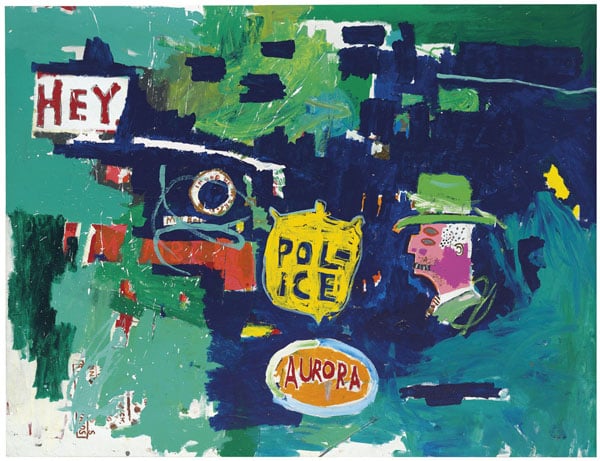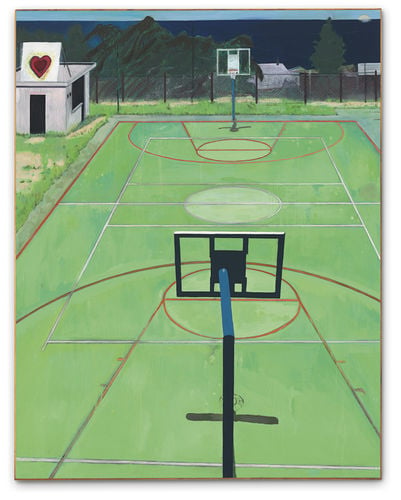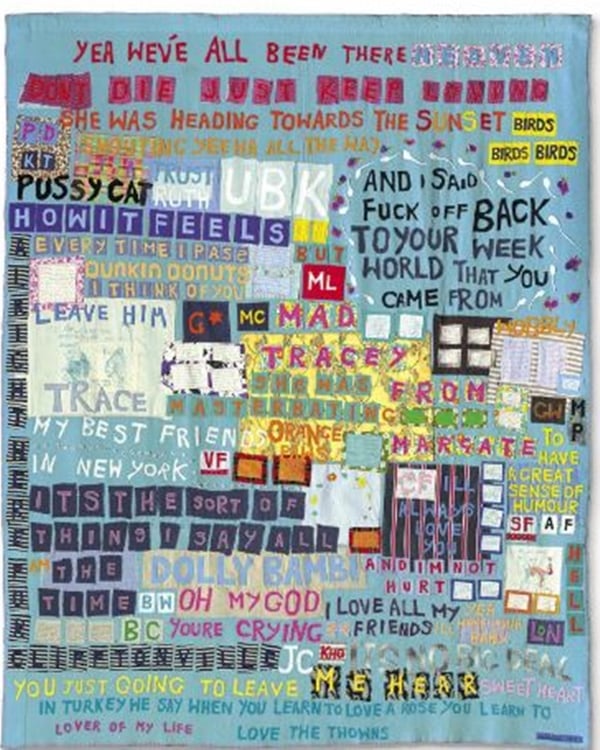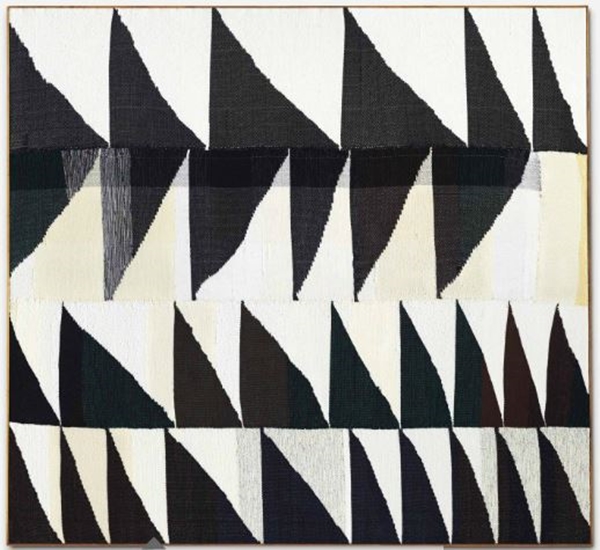Analysis
Peter Doig Sells for $7.3 Million at Christie’s Evening Sale
And Jose Mugrabi snaps up a 1987 Basquiat.

And Jose Mugrabi snaps up a 1987 Basquiat.


Peter Doig, The Heart of Old San Juan (1999).
Photo: Courtesy of Christie’s London.
In spite of massive stock market losses yesterday, the art market held solid in last night’s postwar and contemporary art sale at Christie’s London. The sale realized a mid-estimate £40.3 million, or $64.3 million (estimate: £32–47 million), with 41 out of 46 lots, or 89 percent of lots finding buyers, accounting for 94 percent of the total presale value of the sale.
As is traditional during Frieze week, there was less of the postwar and more of the contemporary on offer. While young artists attracted most bidding, it was the older generation largely that captured the top lots, though not always that convincingly.
Leading the sale was British artist Peter Doig, who may only be in his mid-50s, but has acquired Old Master status in the market. The Heart of Old San Juan (1999), a painting of an empty basketball court, was billed as Doig’s first painting after he’d moved his operation to the West Indies, but that was not enough to excite competition. Estimated at £4–6 million, it sold on a single bid on the low estimate for £4.6 million, or $7.3 million, including premium. Philip Hoffman of the investment group The Fine Art Fund also made a bid, but mysteriously withdrew it a few seconds later.
The painting was one of five guaranteed lots (compare this to the New York sales) that all sold, but not all that brilliantly. Apart from the Doig, Jean-Michel Basquiat’s 1987 canvas, Love Dub for A, (estimate: £4–6 million) sold to Jose Mugrabi for a hammer price below its £4 million low estimate to reap £4.3 million, including premium, or $6.9 million. Gerhard Richter’s early photo-painting, Haus (1964), also sold below its £900,000 low estimate to reap £962,500, or $1.5 million including premium.

Jean-Michel Basquiat, Love Dub for A (1987).
Photo: Courtesy Christie’s.
All eyes were on the Richter market after prices for two abstracts failed to live up to expectations earlier in the week. When a 1969 photo painting, Waldstück (Chile) (Forest Piece (Chile)), sold to a phone bidder, underbid by dealer Ezra Nahmad for a healthy £4.5 million, or $7.1 million (estimate: £3–5 million), and then a rare example from his fiction series of color photo paintings, Fiktion (Garten) (Fiction (Garden)) (1973), sold to art adviser Amy Cappellazzo for £2.2 million, or $3.5 million (estimate: £1.5–2 million), Christie’s was entitled to say that the Richter market was back on track.
But with Richters making up six of the 10 highest estimated lots in the sale, there was no getting away from closer scrutiny. One of the lots, a small 1995 abstract was unsold with a £1.5–2 million estimate, and the other two, the aforementioned Haus and a fairly uninteresting 1981 abstract at £1.1–1.6 million, sold below estimates. This market is getting choosier.
Other German results of interest were Anselm Kiefer’s Lasst Tausend Blumen Blühen! (Let a Thousand Flowers Bloom) (1999), bought reportedly by Georgian business tycoon Bidzina Ivanishvili in February 2007 for a record £1.8 million against a £300,000 low estimate. Now the estimate had increased to £700,000–1 million, but the price went down, selling to an Asian buyer for £1.2 million, or $1.9 million.

Anselm Kiefer, Lasst Tausend Blumen Blühen! (Let a Thousand flowers Bloom) (1999).
Photo: Courtesy Christie’s.
Martin Kippenberger’s Falsches Zeichen der Lord Jim Loge (False Sign of the Lord Jim Loge) (1985) was sold in February 2006 for a low estimate £142,400 to UK property investor Guy Delall, and sold to the same Asian telephone bidder as the Kiefer for £302,500 or $482,000 (estimate: £250,000–350,000). The difference in performance between the two paintings over the years was largely due to the different levels of demand previously, which is never scientifically predictable.
A different Asian buyer picked up a 1968 fractured painting, Ein Zerrissener Hund, Aufwärts (A Fractured Dog, Upwards), by Georg Baselitz, for £1 million, or $1.6 million, against a £600,000–800,000 estimate. It was a good night for Baselitz as his 1982 upside-down painting Orangenesser (Orange Eater) sold to New York and London dealer Per Skarstedt bidding against Amy Cappellazzo, for £1.1 million, or $1.7 million, also against a £600,000–800,000 estimate.

Tracey Emin, Mad Tracey From Margate. Everyone’s Been There (1997).
Photo: Courtesy Christie’s.
The records that tumbled in the sale were for artists in the 50-years-old-and-under category. These would include a record £722,500, with premium, or $1.2 million, paid by Jay Jopling (of White Cube) for an appliqué blanket by Tracey Emin, Mad Tracey From Margate. Everyone’s Been There (1997). It was being sold by the highly regarded Goetz collection in Germany. Yet there was little competition, and the hammer price was below the ambitious £700,000 low estimate.
Another not-so-young British artist’s record fell when Eleanor Acquavella paid £578,500, or $922,129, against a £300,000–400,000 estimate for Rachel Whiteread’s Untitled (Twenty-Five Spaces) (1994–95), consisting of 25 resin casts of the space beneath as many chairs. The artist’s previous record was the £445,250, or $887,305, paid in July 2008.
Younger still is 39-year-old American Joe Bradley, whose nearly eight-foot-high impulsively-created abstract painting Untitled (2011) sold to a South American buyer for £986,500, or $1.6 million (estimate: £300,000– 500,000), eclipsing the artist’s previous record of $965,000 set in May at Christie’s in New York. It was one of several very large paintings that saw new record levels for paintings that capture the zeitgeist of the age.

Brent Wadden, Alignment (10) (2013).
Photo: Courtesy Christie’s.
Other examples were two works from the Saatchi collection by artists who were appearing in an evening sale for the first time. Thirty-five-year-old Brent Wadden, a Canadian artist working in Berlin where he shows with Peres Projects, was represented at auction for the first time with Alignment (10) (2013), a geometric abstract work using hand-woven fibers, wool, cotton and acrylic on canvas that straddles the boundaries between fine art, folk art and contemporary design. Estimated at £20,000–30,000, it sold for a record £74,500, or $118,530.
Forty-two-year-old Toby Ziegler was represented with The Grand Cause (2006), which was estimated at £40,000–60,000 and sold to a US buyer for £98,500, or $156,714. The artist’s previous record was £15,000, or $24,248, set during Frieze week last year.
Other buyers at the sale included Andrew Fabricant, of the Richard Gray gallery; he bought Wade Guyton’s Untitled, a 2006 Epson UltraChrome inkjet on linen work, for £1.2 million, or $1.9 million (estimate: £900,000–1.2 million); and Simon Ray, a dealer in antique Asian works of art, bought Tim Noble and Sue Webster’s Neanderthal fiberglass couple The New Barbarians (1997–99), for £146,500 or $233,082 against a £120,000–180,000 estimate.